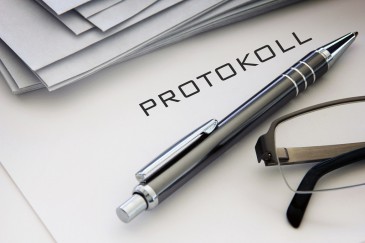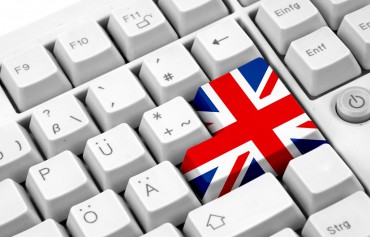
Ein gutes, aussagekräftiges Protokoll ist die halbe Miete, um nach einer Besprechung auch zu Ergebnissen zu kommen. Oft fällt die Aufgabe, eine sinnvolle Mitschrift des Meetings zu erstellen, Ihnen als Sekretärin zu. Kein Problem, mit der richtigen Vorbereitung machen Sie das mit links. Lesen Sie in unserem Business-Englisch-Text wie Sie am besten vorgehen, wenn Sie ein Protokoll schreiben, und was Sie besser nicht aufführen sollten.
Stop and think for a moment: why do we write minutes at business meetings? What are our aims, what are the results, most of all: why bother? Their main purpose is to remind us of what was discussed or decided, and to remind people of what they need to do next – even if this only means reading the minutes in preparation for the next meeting.
Who takes the minutes at a business meeting?
The person who takes the minutes at a business meeting is called the secretary of a meeting. In some firms the secretary of a meeting may not be a participant, thus ensuring that the minutes are unbiased and also that nothing is forgotten while the secretary is engrossed in debate. However, this is not really necessary as long as the secretary is given enough time to both make notes and participate.
What information should be noted?
There is a fairly standard format for the first section of minutes, in which the following information should be noted:
- date + time,
- venue,
- attendees (you may wish to have an attendance sheet ready to pass around, and make sure that you know who everyone is before the meeting really gets going; make a “map” of the table with names if necessary) and apologies.
This part can mostly be completed in advance, or filled in after the meeting. The next sections of the minutes contain the information that is specific to that meeting only, and generally follow the outline given in the agenda: the topics discussed, decisions reached, actions taken or to be taken, materials used or given out, and details of any follow- up meetings or AOB (any other business). As long as the meeting follows the agenda, the minutes can be prepared before the meeting takes place by preparing sheets with the details from the agenda and leaving plenty of space for notes under each item, or by preparing such a document on the computer. Notes can then be taken under each relevant heading, tidied up after the meeting and voila! Almost-instant minutes!
How should the information be noted?
The information should be concise, factual and pertinent. The minutes are not a place to vent frustration or anger, to remind people of any embarrassments or put-downs, or to give a verbatim report of the entire session. They can however be used to record praise or special accomplishments, although in general it is best to avoid singling participants out by name unless this is really required. As long as you remember to avoid the passive, avoid negativity and avoid verbosity (they are, after all, called minutes and not “hours”), your minutes will be better than most! Once you have finished writing up the minutes from your notes (however they were taken), pass them to the chairperson for approval before circulating them to all involved. Do this as promptly as possible. Most experts recommend writing up the minutes within 48 hours, so that everything that was said is fresh in your mind.
von Lucy Renner Jones und Anita Duncan




